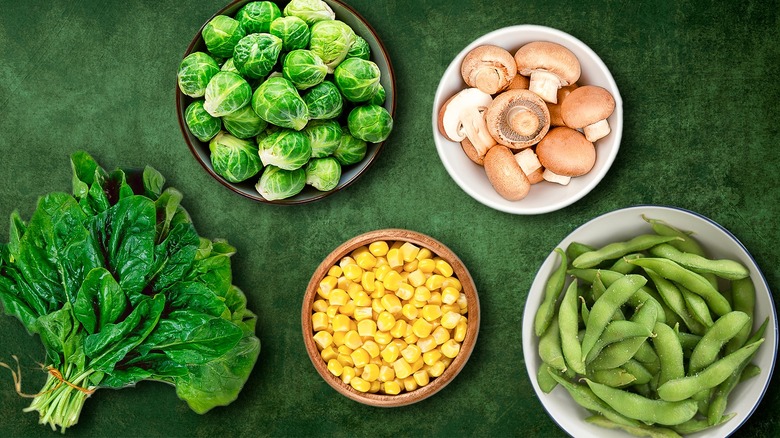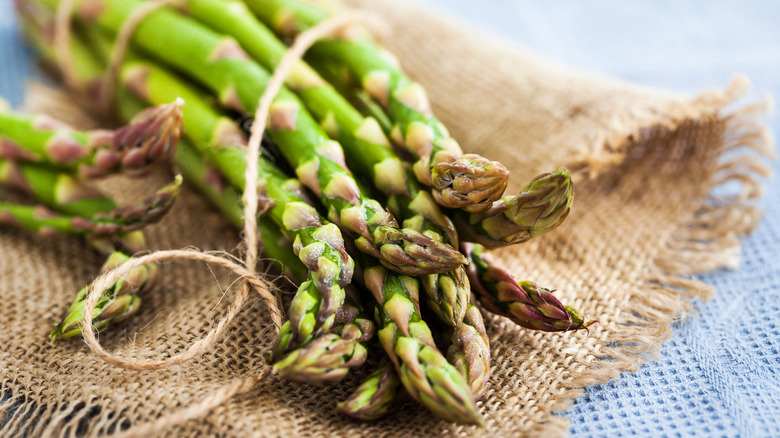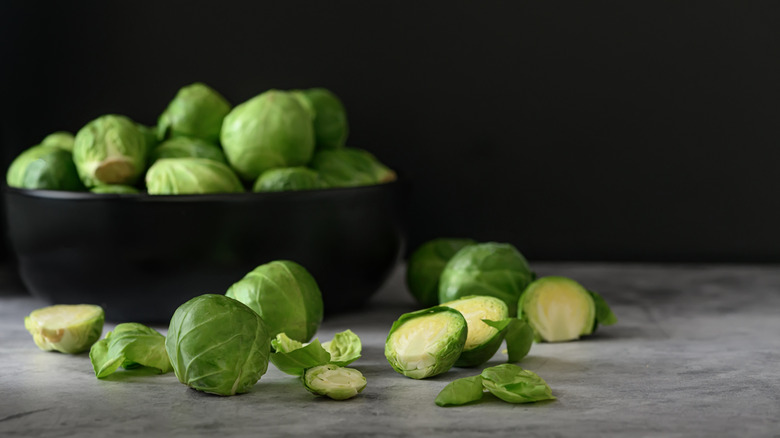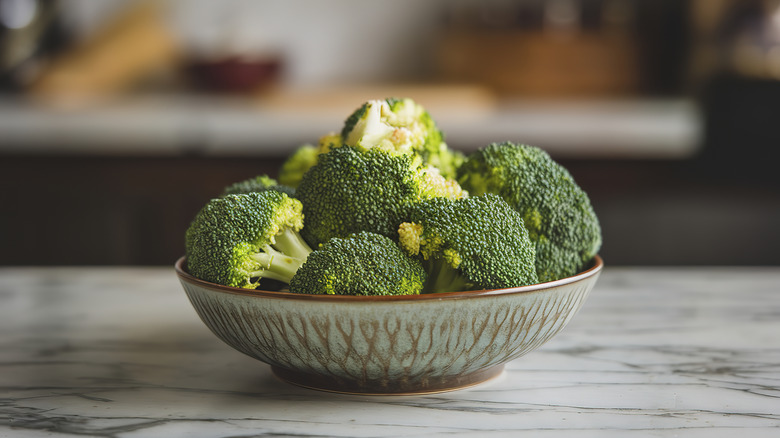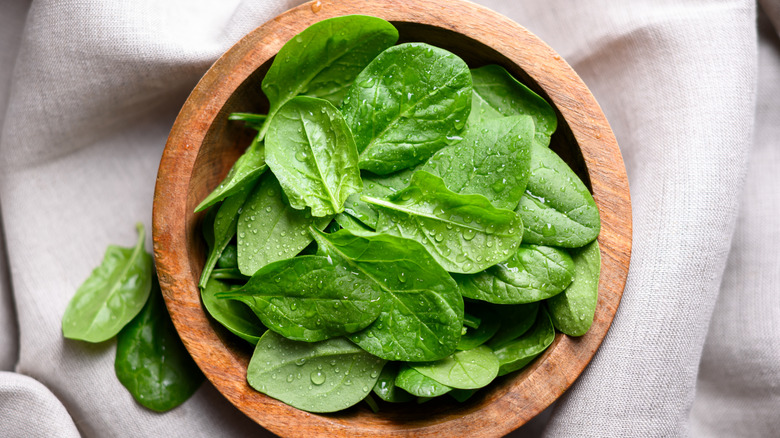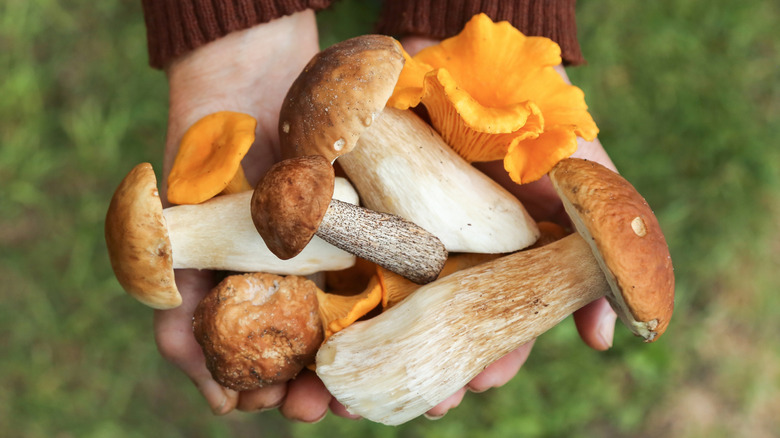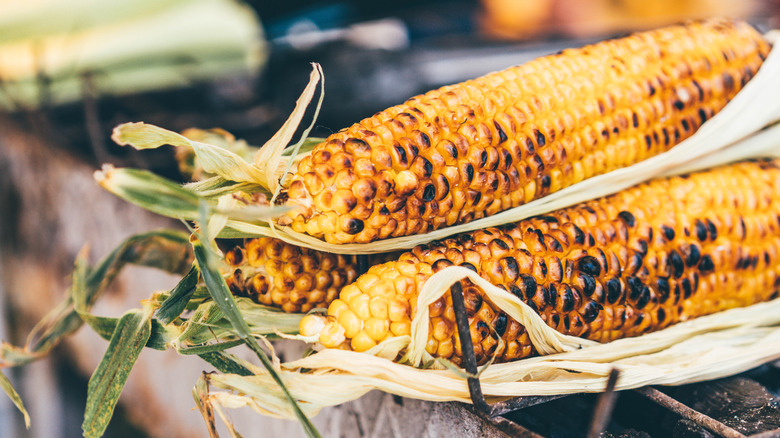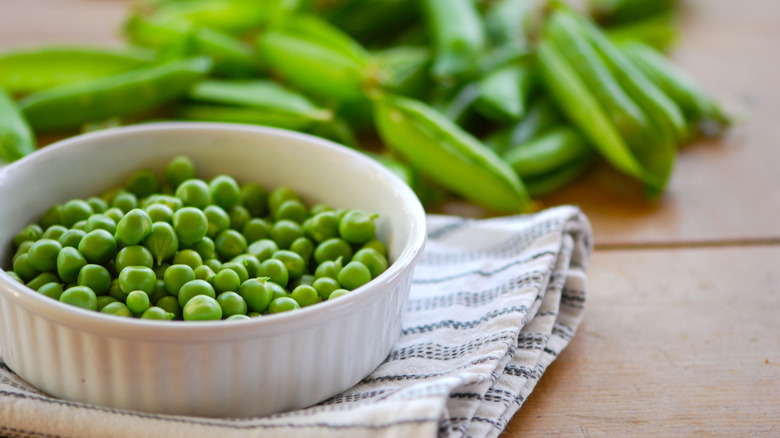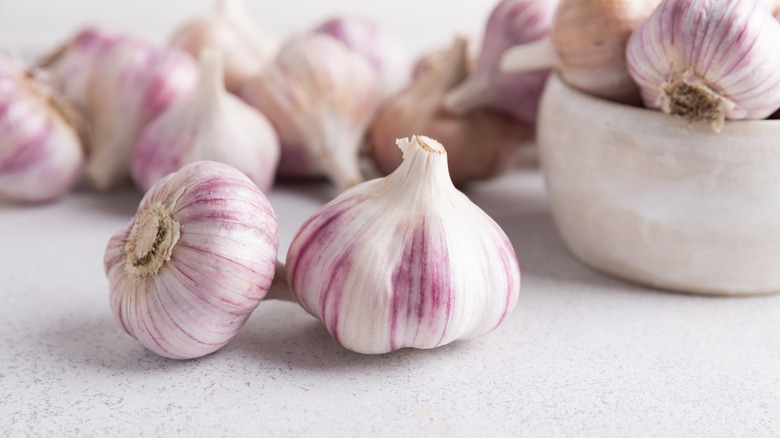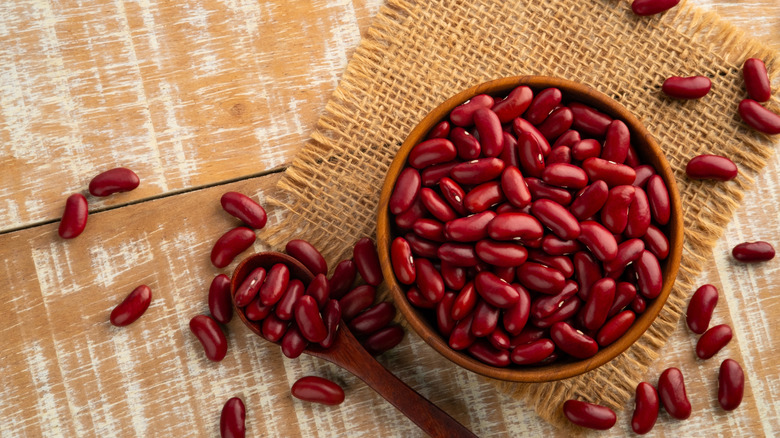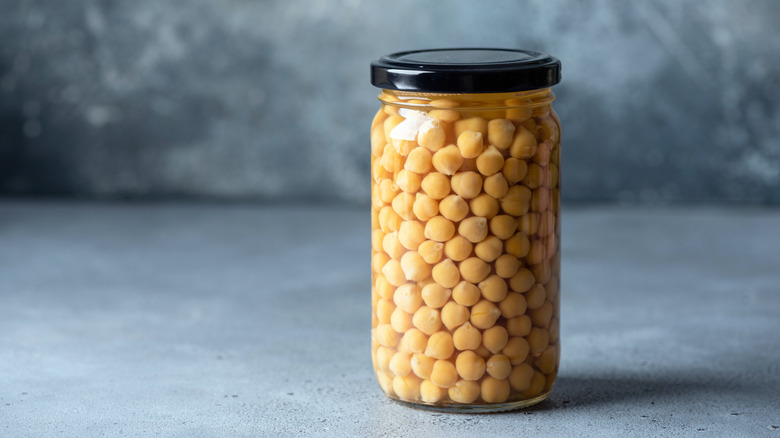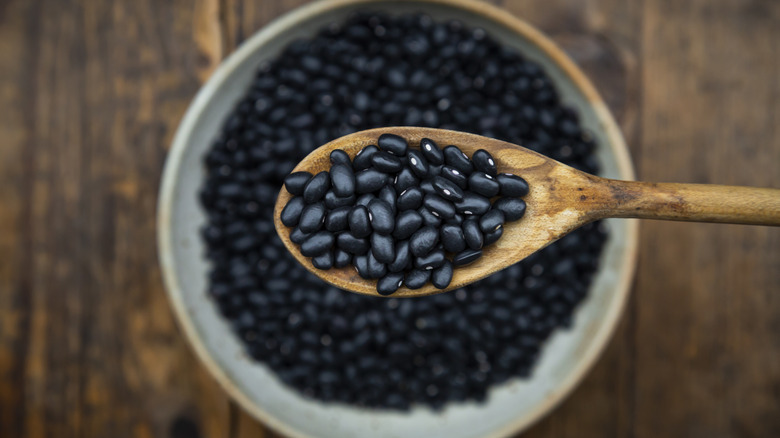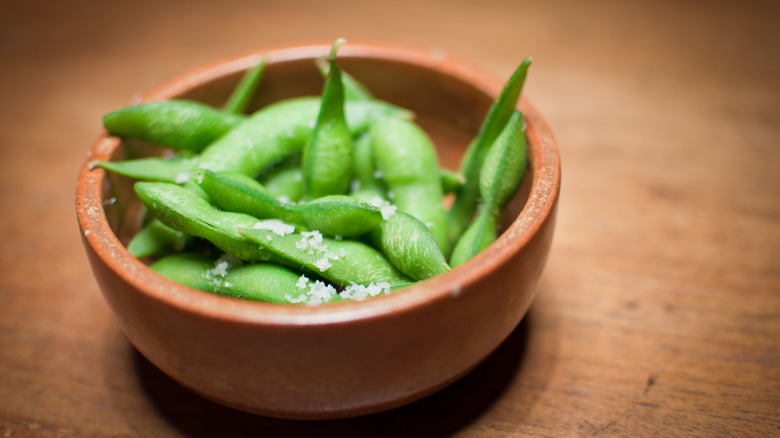12 High Protein Vegetables You Might Be Overlooking
We may receive a commission on purchases made from links.
It's no secret that eating a range of vegetables is recommended for a balanced diet. Whether it's as a side or as an integral part of your meal — think salads — veggies play an important role. But "protein-rich" isn't an adjective that usually comes to mind when discussing vegetables. Even for some folks who are plant based, roasted and raw veggies play bit parts where protein-packed mains like meat, fish, eggs, and poultry maintain a starring role. When it comes to the amount of protein in vegetables, many of us picture vegetables as a side dish to a more protein-rich main, such as meat, fish, eggs, or a plant-based protein.
However, there are many plant-based ingredients that can provide a healthy protein-burst to your meals — including beans, peas, and lentils, according to the United States Department of Agriculture. Getting protein from plant-based sources is a great way to increase your plant points, which can benefit gut health as well as provide you with important vitamins, minerals, and fiber.
Whether you're attempting to maximize your protein consumption, trying to make your plant-based diet richer in protein, or simply curious about the nutrient content of your current veggie intake, here are some high-protein vegetables you might be overlooking.
Asparagus
These slender stalks of goodness are in season during spring and provide a whole host of nutritional benefits. Asparagus is naturally high in vitamins C, A, K, and folate. Interestingly, asparagus has been cultivated for 2,500 years and can be found in the world's oldest cookery book — Apicius' "On the Subject of Cooking."
Not only has it been enjoyed since ancient times, it has also been a good source of plant-based protein. A 100-gram serving of asparagus contains 2.4 grams of protein, As you'll soon find out, that's not the highest protein amount on this list, but it's still enough to make it a great addition to a meal to reach your protein goals.
When you shop for it, make sure to follow Julia Child's tips on how to choose the best asparagus, including firmness from top to bottom and selecting individual stalks over bundles. The right produce can make or break a dish. If you're unsure what to cook with it, a delicious springy asparagus and lemon ricotta tart is bound to impress your dinner guests — and little will they know it's packed with protein!
Brussels sprouts
Brussels sprouts are eternally slated as a picky eater's mortal enemy, but it turns out there is actually a gene that impacts some people's taste receptors, making this vegetable taste extra bitter to them. If you aren't someone with the Brussels sprouts-hating-gene, then this little leafy green could be a great way to get some more protein into your diet. A 100-gram portion of Brussels sprouts contains 2.6 grams of protein. The are also rich in fiber as well as vitamins K and C.
Though Brussels sprouts are sometimes only seen as more of a one-off vegetable set aside for basic roasting, introducing more of them into your meals throughout the year can ensure that you're eating a nutritionally balanced diet. A shaved Brussels sprouts salad is always a nice way to switch up your greens, and there are plenty of ingredients that boost the natural flavor of this oft-maligned veggie.
Broccoli
Though broccoli is consistently one of the most popular and heavily-consumed vegetables in the United States, it sometimes gets a bad rep for being a little boring, or even a mushy, grey experience if not cooked correctly. However, it is a decent veggie to snack on if you're looking for to add some extra protein to your diet. Considered a superfood, a 100-gram portion of raw broccoli contains 2.8 grams of protein and is high in fiber, potassium, iron, vitamin C, and vitamin K.
Fascinatingly, broccoli was first introduced to the United States — before it was even the United States — by its eventual third president, Thomas Jefferson. Even if you're not a Founding Father, though, you can enjoy broccoli in a multitude of ways — steamed, roasted, stir-fried, and grilled — although boiling the vegetable makes it lose nutrients. Boiling can also, understandably, make your vegetables a little too soggy, so it's best turn elsewhere to avoid any additional textural issues. For maximum flavor, the best method to cook your broccoli is to char it with olive oil.
Spinach
Finding the perfect spinach at the store can be a bit of a challenge sometimes, but going to the effort is worth it, because spinach can be a great way to make your meal high in protein. This leafy green is high in nutrition, but low in calories, with a 100-gram serving of spinach containing 3 grams of protein. It is also high in vitamin A, C, and K1, as well as folic acid, iron, and calcium. Spinach consumption is said to have increased by 33% in the 1930s, thanks to none other than the iconic character, Popeye, according to the official Popeye website.
Recently, spinach sales have also rocketed, with an increase of 20% from 2019 to 2020. The Vegetarian Times claimed that "people are eating more spinach than ever."If you do choose spinach to add to your meals for a tasty protein kick, whether wilted, raw, or blended into a delicious smoothie, make sure to store it correctly with paper towels to preserve it for as long as possible.
Mushrooms
Mushrooms are not considered plants, but when it comes to cooking and eating, they're lumped in with vegetables. There are more than 14,000 varieties of mushrooms — some can glow in the dark, while others can help treat neurodegenerative diseases. For our purposes, though, great source of protein.
One cup of raw, white mushrooms contain roughly 3 grams of protein, but dried mushrooms have a massive 9.6 grams of protein per a 100-gram serving. Additionally, they can be high in B vitamins, potassium, and selenium. If the plants were grown in sunny conditions, they could even be a good source of vitamin D.
Mushrooms are massively versatile, whether you want the best type to put in your soup or even looking for a vegan chicken substitute. Whether stuffed portobellos, fried oyster shrooms, or even trendy mushroom coffees are more your thing, you can probably find a mushroom you enjoy if you're looking to boost your protein levels.
Corn
The United States is handily the largest producer and consumer of corn worldwide. This vibrant yellow veggie is such a key part of the American farming system that the U.S. is sometimes dubbed a global corn superpower. Corn is packed with carbs, fiber, and, of course, protein — a 100-gram serving of corn contains 3.4 grams of protein. If you want to get an even more protein-heavy form of corn, popcorn contains a massive 7.5 grams of protein per 100-gram serving. Remember that next time you're in line at the movie theater!
Working more corn into your diet isn't terribly hard since it's so ubiquitous. It's great on its on the cob with a heap of butter and sprinkling of salt and pepper — pr maybe wrapped in bacon — but works just as well when chopped into a smoky meat-free corn chowder or mixed into your morning scramble.
Green peas
Though he introduced broccoli to young America, green peas were allegedly the vegetable of choice for President Thomas Jefferson, who was a keen gardener, and grew 15 different varieties. If he was on the hunt for a high-protein choice, then he was onto a winner.
Green peas are an excellent vegetable to eat for a boost of nutrition, with a 100-gram serving of this veggie containing 5.4 grams of protein. On top of that, they are also high in vitamins A and K, and fiber.
If you're keen to add some peas to your diet but don't know where to start, they work as a perfect side dish with just a sprinkling of salt and pepper — just like many veg on this list. Peas also blend up to make a vibrant green soup that can serve as the perfect lunchtime meal. Some people even blend up a portion of peas with a little garlic, olive oil, seasonings, basil, and pine nuts, to make pesto. If you serve it with a high-protein pasta, such as lentil or chickpea pasta, you'll be in for a healthy and delicious protein punch.
Garlic
Garlic is a real flavor bomb, so it's usually deployed pretty sparingly in dishes. It's also high in protein, though, so it might be time to use a little more in your recipes — bad breath be damned.
A 100-gram serving of garlic is packed with 6.4 grams of protein and is a rich source of vitamin C, B6, and manganese. This veggie is also renowned for its health benefits and medicinal properties. According to research published in Antioxidants, garlic has been used medicinally since at least 1550 B.C. Many diseases and epidemics, such as typhus, dysentery, cholera, and influenza, were treated with garlic. Between that, the protein boost, and the flavor it lends to dishes (and carries on its own), we don't need to see any more scientific data.
Garlic is found as a common ingredient in cuisines around the world. However, if you find this pungent root vegetable a little too intense, you can mellow the flavor out by roasting the whole bulb. If you're tight for time, roasting garlic in the air fryer is a perfect hack to make cooking quicker.
Kidney beans
Beans are a great way to get some more protein into your diet, and kidney beans are no different. Named for their striking resemblance to a human kidney, these vibrant red beans are the perfect ingredient for a bowl of authentic Jamaican rice and peas.
A 100-gram serving of kidney beans contains 8.7 grams of protein, making them a brilliant plant-based protein. Additionally, they are a great source of folate, iron, potassium, and manganese.
Beware, though — if you're planning to cook kidney beans from scratch, make sure to soak them, otherwise, they can be toxic. If soaking and cooking beans sounds like too much of a hassle, canned beans are a great stand-in, and they can be ready in a fraction of the time. If you are looking for some ingredients that will take your canned beans to the next level, trying a new spice mix, adding some olive oil, or garnishing with a touch of garlic can enhance your recipe.
Chickpeas
Chickpeas may look like an unassuming little ingredient, but they are actually packed with goodness. A 100-gram serving of chickpeas provides you with a massive 8.9 grams of protein. The convenience of a can of chickpeas makes it a brilliant way to get a protein-boost without having to do a lot of cooking. They also are filled with nutrients, such as manganese, folate, and vitamin B6.
Its versatility is the stuff of legend — the humble chickpea is found in many dishes across the globe, from Middle Eastern falafel and hummus to Indian chana masala curries. Besides being a great addition to a stew or a salad, the leftover liquid from chickpeas — called aquafaba — can work as a replacement for egg whites in baking. It's also an excellent thickener and can make a delicious vegan mayo or even a foamy cocktail.
Black beans
Black beans are another legume that is guaranteed to give your meals some extra protein. It's easy to rinse away the water inside black bean cans, but surprisingly you can also use this liquid much like aquafaba (though naturally it's a little darker in color than the chickpea version).
A 100-gram serving of beans contains 8.9 grams of protein. They also are a wonderful source of fiber, folate, and iron. No wonder they work as such an easy stand-in and protein substitute – smashed black bean burgers, anyone?
These beans can be enjoyed in a soup — though be sure to salt them liberally, to keep the beans from getting too bitter. . If you're looking for a new way to add black beans to your diet, a fun thing to try is to make some hummus with a Southwestern twist by swapping out chickpeas for black beans. The color and flavor difference will be the perfect protein-packed switch up.
Edamame
One of the easiest ways to add vegetable protein to your meals is by incorporating some edamame. These young soybeans are lovely on their own, enjoyed with a sprinkling of salt or a drizzle of flavorful chili oil and eaten straight from the pod. Alternatively, frozen edamame beans are perfect when added to stir fries and work as an instant upgrade for even the simplest of ramen dishes. You can also add the loose beans to poke bowls, salads, salsas, and virtually any dish or dip where loose vegetables are a welcome addition.
The real reason we're listing them here? Edamame beans contain a mighty 12 grams of protein per 100-gram serving and are, in fact, the highest protein legume out there. Since they're so nutrient-rich and easy to add to a number of dishes, keeping a pack in your freezer is a no-brainer if you've got the space.
